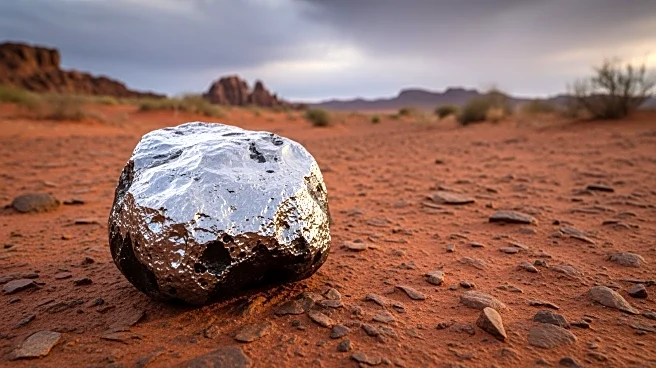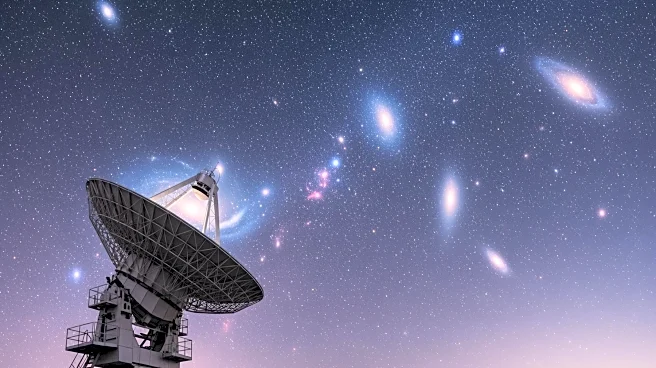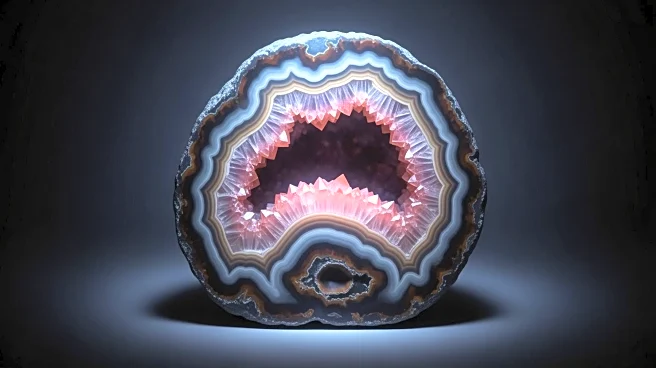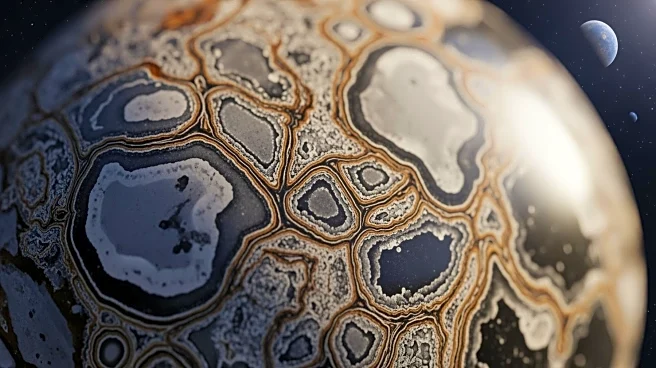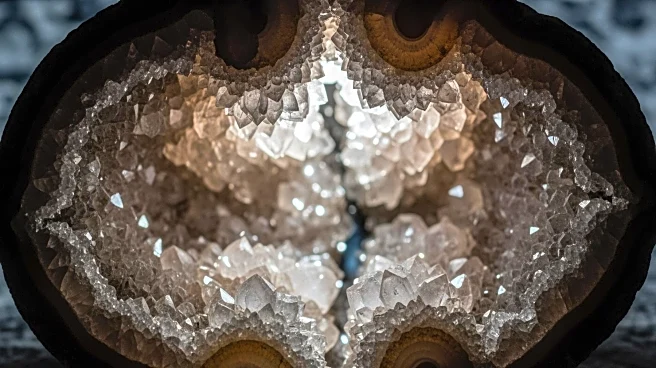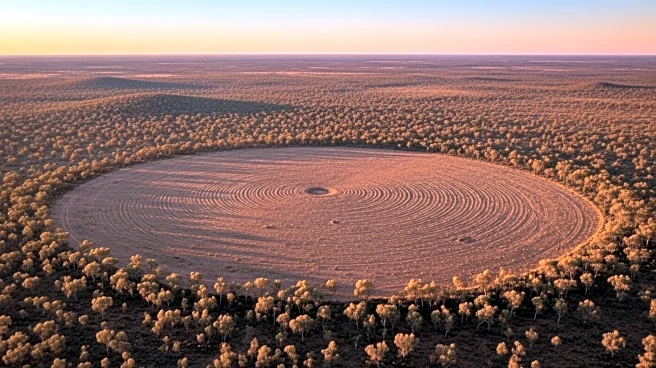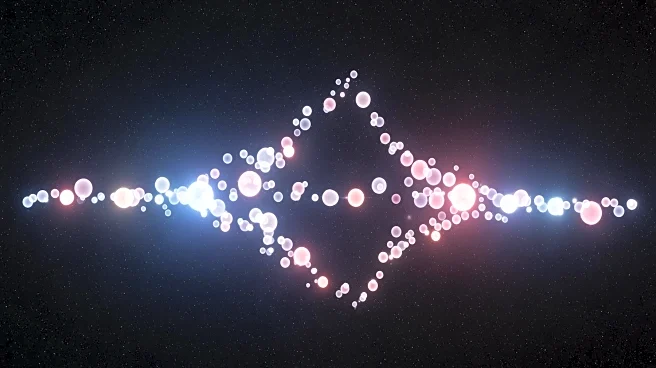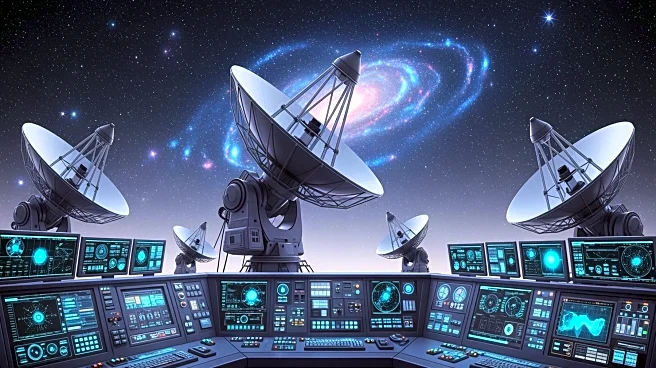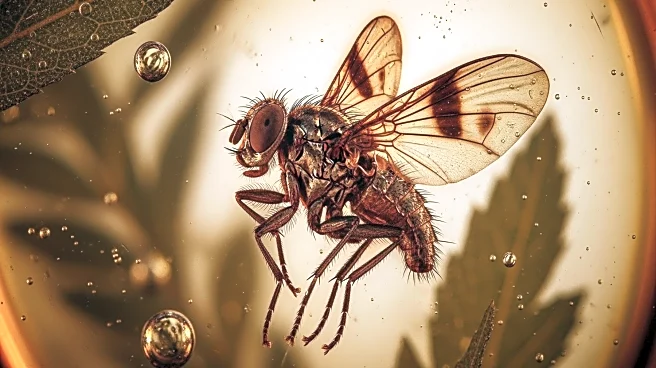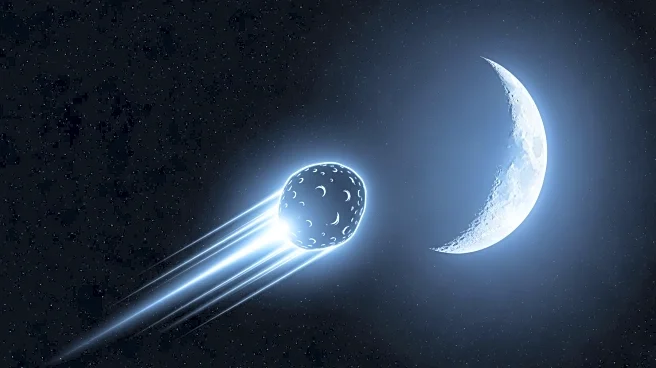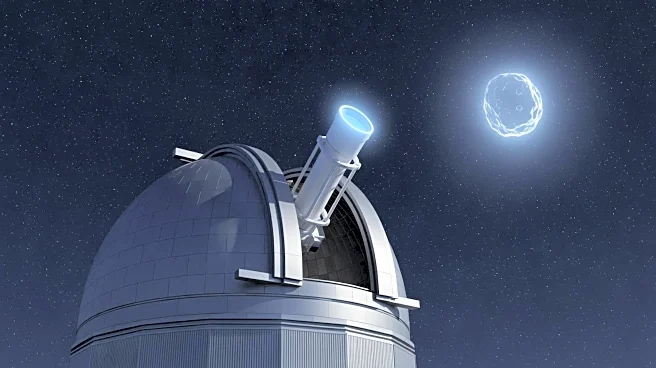What's Happening?
Researchers have identified a new type of tektite, a natural glass formed by meteorite impacts, in South Australia. These tektites are believed to have originated from an asteroid impact approximately
11 million years ago. Despite the significant force of the impact, the crater has not yet been located. The discovery was made by a team led by Professor Fred Jourdan from Curtin’s School of Earth and Planetary Sciences and PhD student Anna Musolino from Aix-Marseille University. The tektites are unique due to their unusual chemistry and age, distinguishing them from the well-known Australasian tektites formed 780,000 years ago. This finding suggests a previously unrecognized giant impact event, adding a new chapter to Earth's geological history.
Why It's Important?
Understanding past asteroid impacts is crucial for assessing future risks and enhancing planetary defense strategies. The discovery of these tektites provides valuable insights into Earth's history and the frequency of large asteroid impacts. This research highlights the destructive power of such events and underscores the importance of studying them to predict and mitigate potential future impacts. The findings could influence scientific approaches to planetary defense and contribute to global efforts in monitoring and preparing for asteroid threats.
What's Next?
The research team will continue to search for the elusive crater associated with this impact. Further studies may focus on analyzing the tektites' composition and distribution to better understand the impact's dynamics. The ongoing research could lead to new discoveries about Earth's geological past and improve models predicting asteroid impact risks. Scientists may also explore the implications of this discovery for planetary defense strategies, potentially influencing policy and international collaboration in space monitoring and defense.
Beyond the Headlines
The discovery of these tektites not only enriches our understanding of Earth's geological history but also raises questions about the frequency and impact of asteroid collisions. It highlights the need for continued research into ancient impact events and their effects on Earth's environment and evolution. This could lead to broader discussions on the resilience of ecosystems and the role of asteroid impacts in shaping the planet's biodiversity over millions of years.
